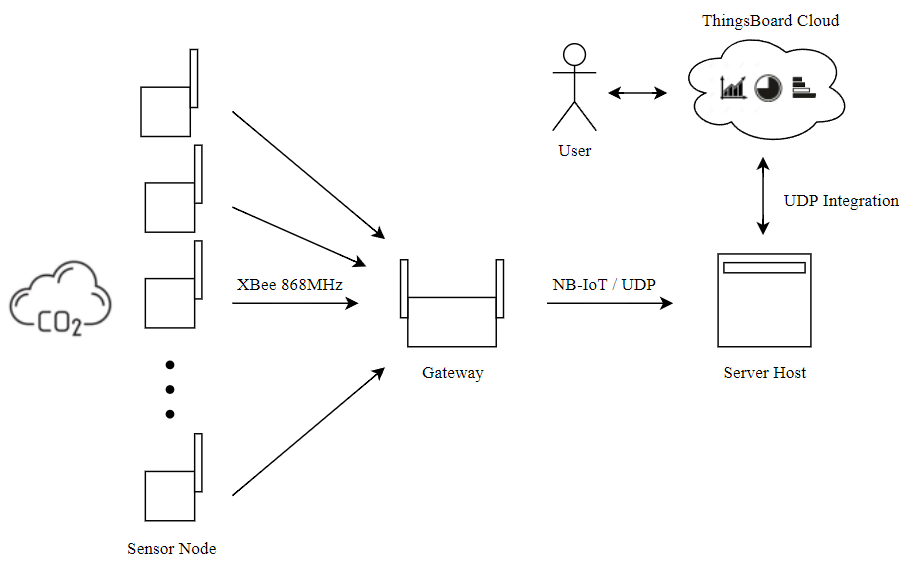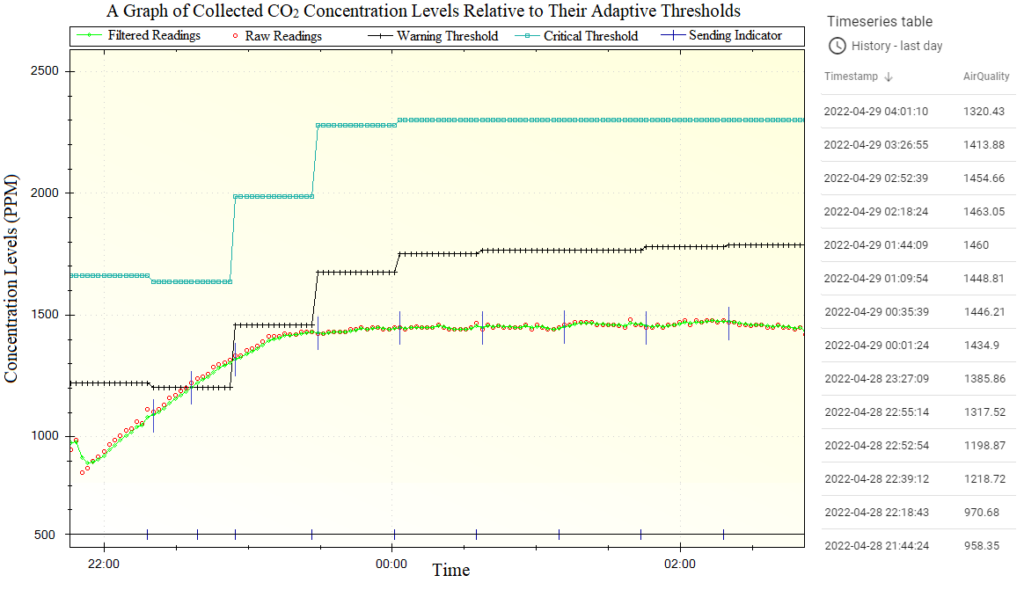With the growing interest in Internet of Things (IoT) as well as the rising concerns for the environment, this work bridges both ideologies to produce an air quality monitoring system. The select approach utilises a Carbon Dioxide (CO) sensor that can be deployed remotely in any type of environment. A hybrid gateway that is capable of receiving CO2 concentration readings from multiple instances of the mentioned sensor and forwarding the information to a cloud dashboard was also developed.
The said gateway is built on an Arduino MEGA microcontroller, with two expansion shields stacked on it. Both shields correspond to the two communicating fronts of the network; the receiving and sending sides. The receiving end is connected to the CO2 sensor via Xbee 868MHz, a wide-area, low-power radio frequency (RF) operating on the European free ‘Industrial, Scientific, and Medical’ (ISM) band. On the other end, Narrowband-IoT (NB-IoT) is utilised to upload to the cloud dashboard. NB-IoT, operates on a narrow portion of the Long-Term Evolution (LTE) band. Such technology proves to be the superior choice when it comes to hard-to-reach coverage, reliability, as well as power consumption.
To further cut down on the cost and power consumption, the microcontroller aggregates the received data and adapts to the environmental changes that the sensors record. This results in an intelligent understanding of when it should send such information to the user, reducing the aforementioned consumption by eliminating adaptively determined redundant information that would otherwise induce an LTE charge via the onboard SIM provisioned by Epic Communications Limited. Furthermore, the system is likewise able to recognise what kind of readings are of concern in the present environment and should require the immediate attention of the user.


Student: Isaac Debattista
Course: B.Sc. (Hons.) Computer Engineering
Supervisor: Prof. Carl Deboo
Co-supervisor: Dr Mario Cordina
